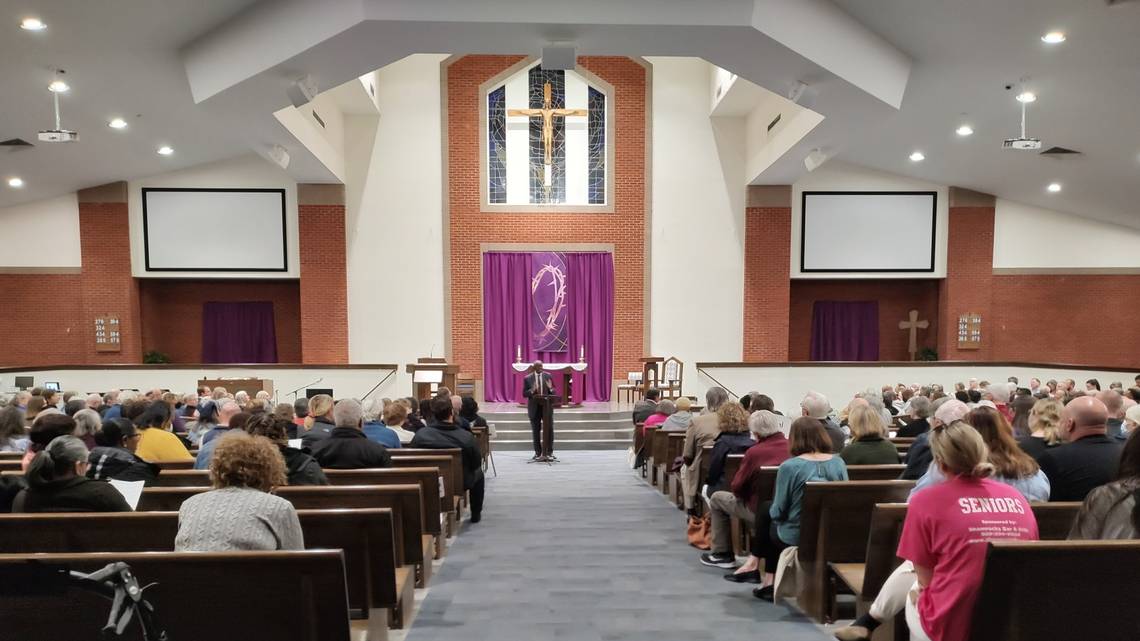By Beth Musgrave, Lexington Herald Leader
The Lexington council opted Tuesday to get more information before moving forward with a microtransit pilot program.
During Tuesday’s Lexington-Fayette Urban County Council’s Environmental Quality and Public Works meeting, the committee took no action but said it may revisit the issue during budget discussions, which will begin in earnest in late April.
Microtransit is on-demand transportation services enabled by technology, said Councilman Chuck Ellinger, who put the issue into committee. It works like a public-subsidized Uber or Lyft service.
Those cities that have successfully implemented microtransit include Memphis, Tenn., Columbus, Ohio, Birmingham, Ala. and others, Ellinger said.
Riders can use an app or call to make an appointment. The ride-share would operate either from a bus stop or fixed area, or can do door-to-door service.
Riders with mobility issues could utilize the door-to-door services, Ellinger said.
Lextran did a microtransit study examining where it would be most effective and could replace some fixed bus routes.
It looked at four possible areas:
- Leestown Road and Masterson Station area
- Joyland, Winburn and Bryan Station neighborhoods
- Southwest Lexington including parts of Beaumont and Wyndam Downs
- Southeast Lexington including Kirklevington Park, Southeastern Hills and Park Place neighborhoods.
The push for a pilot microtransit program has been backed by BUILD, Building a United Interfaith Lexington through Direct-Action, a coalition of churches which have pushed for other changes, including the implementation of the city’s affordable housing program in 2014.
BUILD supporters packed the council chambers Tuesday to show support for a pilot microtransit program.
The group started looking into access to mental health and drug addiction treatment and found transportation was the main barrier for people accessing treatment.
The group then looked at other areas of the city where transportation was sparse or infrequent. Lack of transportation in some areas of Lexington kept people from maintaining or getting jobs, the group has said. Some parts of the city are miles from Lextran bus stops.
MICROTRANSIT IS EXPENSIVE. WHERE’S THE MONEY COMING FROM?
State and federal grants can be used to pay for microtransit, Ellinger said.
But many of the cities that have microtransit funded those programs through local or city tax dollars. In Jersey City, NJ, almost 90% of its microtransit program is funded through local taxes, according to information provided to the council committee.
“We have $400,000 that we can set aside for a pilot program,” Ellinger said.
That $400,000 is not budgeted through Lextran, said Emily Elliott, planning coordinator and community development for Lextran.
Funding is a major concern for Lextran, she said.
What Lextran doesn’t want is for microtransit to take away from its fixed-route bus service.
“Without funding secured, we aren’t going to apply for grants,” Elliott said.
Elliott said they are experiencing problems with hiring drivers, which is creating problems for its current services, including Wheels, a paratransit service for the disabled and elderly.
Elliott and others have said federal grants for public transportation are very competitive and difficult to get.
If the city set aside $400,000 from a capital account, Ellinger argued Lextran could apply for those grants.
Ellinger said $400,000 could go to one pilot zone on the north side or south side. Federal grants would pay for 80%. The $400,000 is 20%.
“Nine out of 10 applications are not successful,” said Chris Evilia, executive director of the Lexington area Metropolitan Planning Organization, which helps coordinate state and federal funding and transportation projects in Fayette and Jessamine counties.
Evilia said a similar program in Arlington, Texas, cost $30 million over two years. Councilman David Sevigny said he thinks there is a place for microtransit but he, too, wants to hear more before setting aside $400,000.
Lextran, which has its own property tax rate, would have to double its tax rate to pay for microtransit, based on Arlington, Texas, numbers. Lextran’s budget is $36 million. A similar program to Arlington’s would cost roughly $15 million a year, which is nearly half of Lextran’s budget, Sevigny said.
Councilwoman Whitney Elliott Baxter questioned if those grant dollars could be spent on improving current transportation systems, including Wheels.
Vice Mayor Dan Wu said he would like to see more information, including long-term cost projections, before adding a new service. Wu recommended waiting for more information.
Councilwoman Jennifer Reynolds also recommended looking at improving Wheels services first.
“We want those that are most vulnerable to have the transportation that they need,” Reynolds said. “Maybe we need to re-do Wheels?”
View the original story here.






